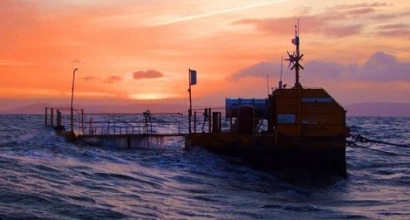
The search for energy resources in Japan is currently a high priority with a keen focus on tidal power. A report published by the New Energy and Industrial Technology Development Organization (NEDO) in 2010 found that the potential of tidal energy in Japan is equivalent to 20 nuclear power plants, with the Seto Inland Sea, where Okayama University is located, being a site with especially high potential.
“I want to exploit the mechanical motion of a pendulum to generate electricity from tidal currents” said Mr Hiejima, an associate professor at the university’s Graduate School of Environmental and Life Science. “My fascination with the structure of bridges triggered my research on the interaction of strong winds with massive bridges such as the Seto Bridge that connects Okayama with Kagawa in Shikoku. In my early research I analyzed why large bridges oscillate when hit by strong winds such as typhoons. Now, I am focusing on harnessing tidal energy as a stable source of electricity.
Mr Hiejima added that he is looking for partners to develop his ideas on the Hydrokinetic Vortex Energy Utilization System or Hydro-VENUS, a large underwater pendulum based system. He believes that propeller type turbine systems being tested in Europe have three major drawbacks: High strength required for the materials used for making the rotor blades leads to increases in cost; waste in the ocean clogs up and damages rotors; and, fisherman consider the sharp edges of rotor blades to be harmful to marine life.
To resolve these problems, Hiejima began analysing the potential of power generated by flow induced vibrations of cyclinders placed horizontally in water. This approach overcomes the shortcomings of propellers but the vortex induced vibrations – the cyclinder moves translationally as waves move across them – typically only yield a power efficiency of around 37 percent of so-called VIVACE converter obtained in the experiments conducted in the USA.
Hiejima’s concept for the Hydro-VENUS does not vibrate translationally but rotationally, and initial tests yielded a power efficiency of 76 percent. Early tests were carried out using 1.5 metre cylinders and Hiejima is now developing 20 metre cylinders from a wide range of materials with the goal of producing highly efficient structures. Having patented and demonstrated the potential of the device, Hiejima is now seeking industrial partners to commercialize it.
For additional information:

